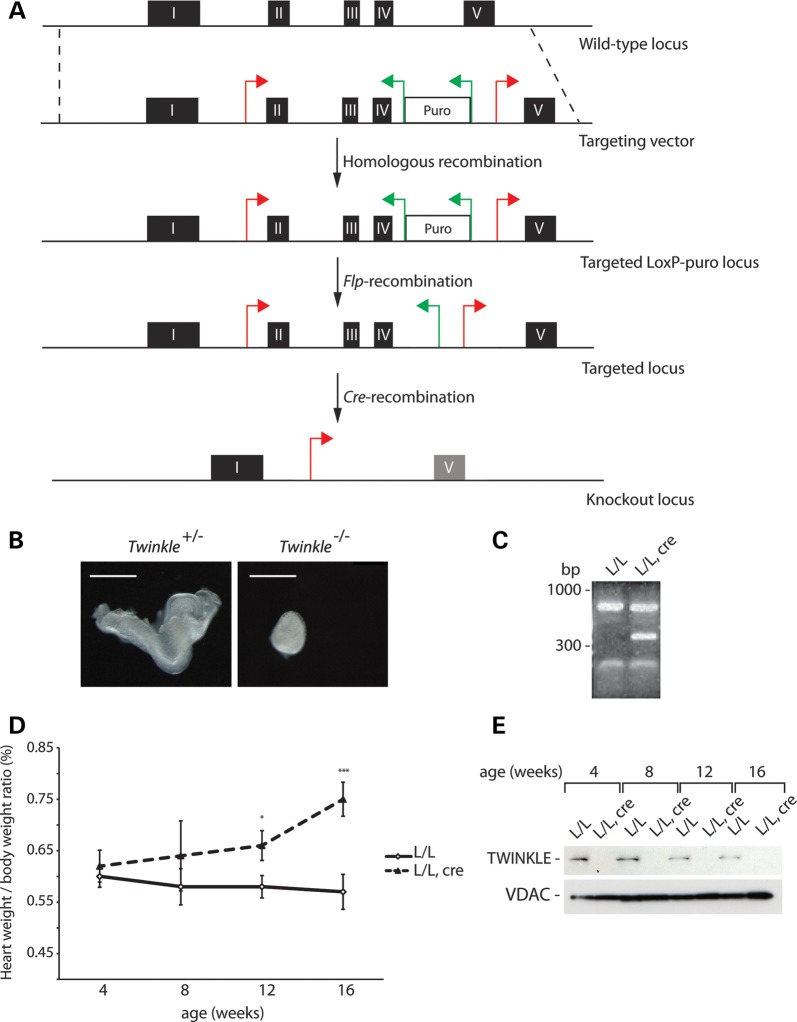Figure 1.
Conditional knockout of Twinkle. (A) The targeting strategy for the conditional disruption of the Twinkle gene. (B) Morphology of heterozygous (Twinkle+/−) and homozygous knockout (Twinkle−/−) embryos at E8.5. Scale bar, 0.5 mm. (C) RT–PCR analysis of Twinkle transcripts from wild-type (L/L) and tissue-specific knockout mice (L/L, cre). (D) Heart-to-body weight ratio of control (L/L) and tissue-specific knockout mice (L/L, cre) at indicated time points. Error bars represent SEM; *P<0.05, **P<0.01, ***P<0.001, Student's t-test. (E) Western blot analysis of TWINKLE protein levels from wild-type (L/L) and tissue-specific knockout mice (L/L, cre) at different ages. VDAC levels were used as a loading control.

